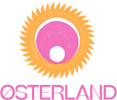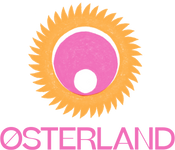Nehla Solak is an artisan of handicrafts. She was born in 1969 in Antakya, the most beautiful place, she tells me. This ancient town is located along the banks of the Orontes River to the south-east of Turkey, bordering Syria. It is infused in a history of craft and has always been a source of inspiration for Nehla.
Today, Antakya is almost entirely demolished as a result of the Turkey-Syria earthquake that took place on 6 February 2023. Nehla was displaced to Ankara after losing everything – including her most cherished atelier on Kurtuluş Caddesi, the historic street which was once a key part of the Silk Road.
Nehla now works from her home in Ankara. She is one of the master artisans for Oesterland, a Danish company founded to pay homage to craft and heritage. With a strong drive to make impact, Oesterland works with displaced communities across Turkey and Afghanistan, preserving and spreading their unique art. Nehla has been working with the Oesterland family for the past 4 years reviving traditional crochet beadwork. Recently, Nehla’s necklaces were included in Oesterland’s campaign showcasing craft from the Swana region.
I spoke to Nehla about crafts in the face of loss and destruction, how her passion for what she does gives her hope for the future, and the importance of keeping cultural heritage alive.
By Idil Asan
Photography/Olivia Rohde & Elif Kahveci
Merhaba Nehla. It’s such a pleasure to speak to you. You have been embroidering and doing crochet for an impressive 30 years. How did you learn this craft?
I learnt it from my mother and sister. It’s a form of intergenerational knowledge. It comes from the family. I started with lace. I didn’t go to school so naturally I was at home a lot which exposed me to handicraft at home. That’s how it all started.
After some time, I learnt that the office of the Ministry of Culture and Tourism in Hatay was holding exhibitions on handicraft. I applied. I displayed lace curtains, wool waistcoats, and patiks (slipper socks).
I also started taking courses. I went to ebru (paper-marbling) and wood-making classes, as well as oya, a traditional Turkish needlework. I gathered materials over the years and opened a small shop for myself.
But it’s all gone now. I’m starting from scratch because of the earthquake.
Antakya is a special place for you, where you were born and lived up until the earthquake in February 2023. How does your connection to your hometown translate into your craft?
Antakya is a place steeped in history. Handicrafts is part of this history.
The lace curtains of Antakya have always been a great source of inspiration for me. They have a special place in my heart and childhood memories. In the past, the old stone houses had many small windows. Instead of tulle curtains, each window was draped with lace, and each had a different design embroidered on to it – birds, flowers, butterflies, or images of the working woman.
The patterns I use in my work reflect the texture of Antakya, Hatay. The different motifs that our elders used to make are now turned into intricate adornments and jewellery. It’s so special to revive traditional crafts and use these motifs in creative ways.


For you, it all started with lace. How do you incorporate it in your craft today?
I love lace. My work originally revolved around lace. I would make curtains and tablecloths.
There came a point where people started losing interest in lace. Lace curtains are expensive and require a lot of love and care to keep in good shape. It lost its appeal as most people turned to machine sewn curtains. I had so much of my lace work leftover that I ended up displaying them in my own home!
Even though people started losing interest in lace, I never did. I wanted to integrate it into my work somehow. I thought, how could I use lace models in jewellery? So, I came up with the idea of re-using leftover oya to make necklaces. I wanted to keep the tradition alive.
Congratulations on having your necklaces as part of Oesterland’s most recent campaign. How does it feel to see people wear your jewellery?
It gives me life. It’s so important to keep our cultural heritage alive. There is so much labour that goes into it. It’s not the same as using machinery. Of course, work goes into that as well. But as the saying goes, el emeği göz nuru (handicraft is eye straining work).
It makes you stronger to know your craft is valued. It keeps me motivated. My work reminds my customers of their elders, their past, their history – the jewellery that their mothers and grandmothers once wore. It’s a special feeling.
It seems Oesterland has been a big part of your life in the past several years. What does the Oesterland family mean to you?
Oesterland has a special place in my heart. I made life-long friendships. Friends and colleagues who have always been there for me, even in the worst of times. They are my community. Oesterland is not just my place of work, but also friendship.

Your atelier was filled with different types of materials – from beads to fabrics. Can you tell us about some of the materials you use in your work?
I used to work with a much wider range of materials, but I lost all my equipment and materials in the earthquake. My atelier was completely destroyed. I couldn’t even salvage one needle. I’m grateful to have come out of there in one piece.
I like using different materials. For example, I used to make necklaces using pumpkin seed shells. I would dip both sides of the shells into the ebru (paper-marbling). It was a challenging process. I used natural materials, like shells I collected from beaches. I would also recycle old clothes and fabrics, too.
Right now, I mostly use glass or sand cast beads. It depends on the orders I get. I still haven’t been able to replace the materials I lost.
Hatay is still recovering from the devastating earthquake that has impacted millions of people in the region. As you mentioned, you had a charming atelier in the centre of Antakya which I had the pleasure of visiting right before the earthquake. Is there a story behind your atelier?
My atelier was called Emsali Takı (Emsali Jewellery). Emsal is my mother’s name. It was my dream to have my own atelier and I always wanted to name it after my mother. It’s a way to honour her. She sow the seeds of my craft. My only hope is to set up another atelier one day.
How has your creative process been affected following the earthquake?
I was hospitalised after incurring serious injuries, so I completely stopped working for some time. I’m slowly recovering. These days I find it therapeutic to work with all these different kinds of motifs. When I create something, I feel proud of myself. It’s as if I’m incorporating my own thoughts into the embroidery, into every stitch. Your mind takes you somewhere else, a happier place. My work gained new meaning for me. It allows me to escape the nightmare of the earthquake. Inshallah it will pass.
“My work gained new meaning for me. It allows me to escape the nightmare of the earthquake. Inshallah it will pass.”
Inshallah. What do you miss most about Antakya?
I miss my home, my atelier, my family. I lost my twin sister in the earthquake.
I was displaced to Ankara. I have been here for almost a year, but I have not been happy. The hope of going back keeps me alive. I put an application for a container tent in Antakya so I can go back, but they are all full. It’s difficult living away from your hometown.
I’m very sorry for your losses. Your strength and passion for handicraft is inspiring. Is there anything you would like to say to the readers?
Don’t give up. Despite the hardship, fight for your passion. I’m doing everything to get back on my feet. It’s empowering to go after your dreams, to produce, and to take care of yourself. Especially for women. It has always been important to me to stay independent.
Thank you for taking us into your world.
Thank you for taking interest. Take care.




